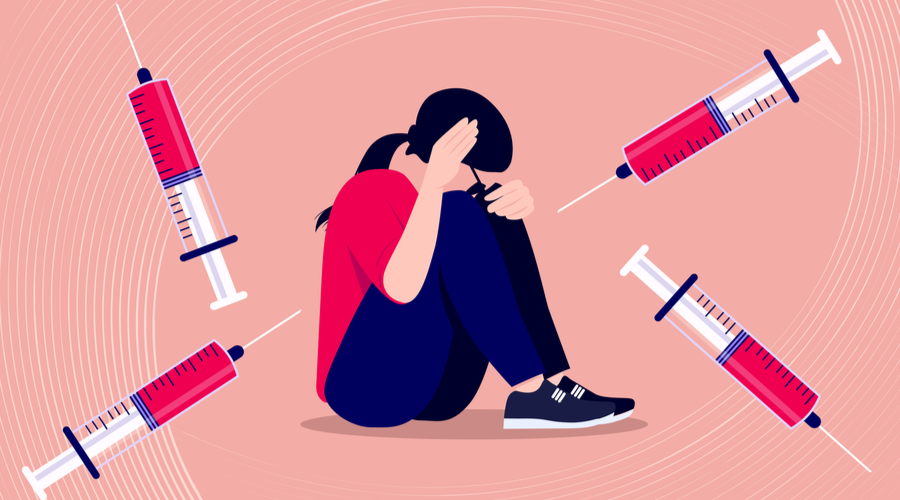Gone are the days when dispensing prescriptions for your patients was your only task. Today, pharmacists are doing a lot more and patient-care services are increasing. Many pharmacies out there now provide a growing list of additional services such as immunizations, medication synchronization, point-of-care (POC) testing, medication therapy management (MTM), counseling, chronic-care management, and patient education.
Nick Smock, President and CEO of PBA Health, PharmD, MBA, President of FPN, Vice President of APHA, and member of various state pharmacy and national associations, said pharmacies today provide much more than medications. They provide not only prescriptions and education, but healthcare, too.
“Pharmacists can do more than dispense medications. Today, they provide physical assessments, therapeutics, and clinical services such as blood pressure and immunizations. All of these things are taught in pharmacy schools, yet pharmacists still aren’t really known for that,” Smock, with over 40 years of industry experience, said. “People still view pharmacies as a place to simply pick up a prescription. We really need to expand consumers’ perception that you go to your pharmacy for healthcare.”
While the pharmacy workload is increasing, reimbursements for the clinical services provided lag. Many factors prevent pharmacists like you from getting reimbursed for your services. First, there is a lack of resources that explain the required steps to implement clinical services (especially as a billing provider). Add to that the obscurity of what services are covered, charting requirements, credentialing, and the steps to enrollment. There are inconsistencies in state and federal agencies recognizing pharmacists as qualified care providers, which services are permitted, and the payment parity laws that require health-plan payment for pharmacist providers.
“The business side of pharmacy today is questionable in a sense because you really have to push a lot of prescription volume. Today, pharmacies are lucky to be reimbursed for the cost of the product. Previously they could add their professional fee to the cost of the medication, but now the pharmacy benefits managers reduced the professional fee to a ‘dispensing fee’ that does not cover the prescription label and/ or vial. Reimbursements are so low that you’ve got to look for other avenues to bring into your facilities,” Smock said. “The value of pharmacists and their help has increased since COVID because we were able to bill for vaccinations and provide more for patients. Vaccines at your local pharmacy are an important resource offered to patients since pharmacies are easily accessible.”
Phillip Rozell, PD of Medical Arts Pharmacy, said his store is still going strong providing vaccines for their patients. “We are still administering 20 to 60 vaccines per day,” Rozell said. “So far, our team has administered over 39,000 COVID vaccines. Our clinical team has been involved and committed from day one.”
According to Smock, this may change as the PBMs and insurance companies continue to ratchet reimbursements lower and lower and force pharmacies to sell or close their practices.
“In my view, PBMs and insurance companies are short sighted and should be paying pharmacies for their service to help reduce the overall medical cost of patients. In the past, and even today, prescription cost of health care is only 10 percent of the overall health cost of patients. The larger cost is medical care, accounting for 90 percent of spending. Pharmacy has been shown to reduce the cost while improving patients’ quality of life.,” Smock said.
While the procedures by which pharmacists can receive reimbursement for patient-care services have advanced in recent years, the billing process remains inconsistent across systems and settings of care. Clearly, it’s your greatest challenge and opportunity.
“They said years ago, ‘Get into politics or get out of pharmacy,’” Smock said. “I have been thinking, ‘Today, get into services or get out of pharmacy.’ Pharmacists will have to get into services. You don’t want to let go of the product because we’re licensed to purchase, store, handle, and dispense. We don’t want to let go of that function, and we want to expand pharmaceutical and healthcare services. Today, pharmacy is positioned to offer a dual type of healthcare: product and service.”
Billing Patient-Care Services
There are several methods for billing pharmacist patient-care services. The use of a particular method is dependent on the type of benefit providing coverage for the service, provider-payer contracts, care settings, and professional service agreements. The National Council for Prescription Drug Programs (NCPDP) shares this list of billing types.
Contract-Based Reimbursement: Pharmacists may be reimbursed based on contracts with payers or through professional service agreements with or between providers. The pharmacist and the health provider negotiate rates and billing methods. Right now, there is little standardization in such agreements. Payment can be fee-for-service or may be covered under a global rate, capitation, or similar arrangement.
Direct Patient Payment: As a pharmacist, you can charge patients directly for their services on a cash transaction basis. You set the cost structure. Patients pay out of pocket for the service. They may receive documentation to get potential reimbursement through a flexible benefit program or from their health plan.
Billing Using Procedure Codes: Procedure codes can be found in the Healthcare Procedure Code System (HCPCS) and the Level I American Association CPT codes. Specific CPT codes were developed in 2005 for the payment of a Medication Therapy Management (MTM) service provided by a pharmacist. You can find information on the use of these codes at www.pstac.org.
Incident-To Billing: The services provided by pharmacists may be delivered across various settings of patient care, such as a physician office or clinic, under the supervision of and in collaboration with a physician or recognized practitioner. The approach to filling in these settings is “incident-to” billing. This means the practitioner or clinic bills for the services of the pharmacist “incident-to” the practitioner or clinic service. The billing subject receives payment and then reimburses the pharmacist. Medicare provides these further requirements:
- The services must be part of the patient’s normal course of treatment during which a physician personally performed the initial service and remains actively involved during treatment.
- The supervising physician must provide direct supervision. For group providers, any physician member of the group may be present in the office to supervise.
- The patient record should document the essential requirements for an incident-to service.
Here are some points to consider within the definition. It’s noted that the physician bills Medicare Part B as if they were the one performing the service. It’s not the pharmacist who is billing Medicare. Instead, you are providing the service incident-to the professional service of the physician. Because pharmacists are performing the clinical service, however, they’re eligible to receive partial to full financial credit when the practice submits for reimbursement from Medicare by including the pharmacist as a secondary provider on the encounter sheet or superbill. The physician must also have performed the initial patient service before subsequent visits by the pharmacist to be eligible for incident-to billing. This provides the physician a chance to establish the diagnosis and put together a treatment plan for the patient (which is another requirement for incident-to billing). Last, but not least, the physician must provide direct supervision of the pharmacist performing the incident-to service; but there are three different levels of supervision.
General supervision: It’s required that the physician provides supervision of the service, but the physician is not mandated to be at the place of service.
Direct supervision: The physician is required to be at the place of service and be immediately available to assist, but is not required to be in the room where the service is provided.
Immediate supervision: The physician is required to be physically present in the room where the service is being provided.
You might find that administrators believe that pharmacists are not eligible to perform incident-to billing because they’re not classified as a “provider” by Medicare Part B and are not specifically mentioned in Medicare rules as being able to perform those services. However, the American Academy of Family Physicians (AAFP) directly contacted and asked Medicare if pharmacists were eligible to provide clinical services in an incident-to manner. Medicare agreed with AAFP that pharmacists are eligible to provide clinical services in an incident-to billing model if they meet all the additional requirements of incident-to billing.
The implementation of a signed collaborative practice agreement (CPA) between the physician and the pharmacist provides specific criteria for future services provided by the pharmacist. It’s an established and accepted mechanism to fulfill the intent of the Medicare incident-to billing provision. CPAs require physicians to guide patient care, including determining which patients are seen by the pharmacist, which conditions or medications the pharmacist will manage, and what degree of responsibility the pharmacist will have.
Medicare openly supports clinical services performed by pharmacists in an incident-to manner. Though pharmacists aren’t recognized as providers at the federal level, most states have language authorizing CPAs, which provide legal authority at the state level.
As national pharmacy organizations continue to push towards formal recognition as providers, the use of incident-to billing in the meantime will allow the services performed by pharmacists to be billed at a higher level. This will vastly improve the financial sustainability of clinical pharmacy services as well as increase the incorporation of pharmacists into care teams. It’s been proven that adding pharmacists to care teams improves clinical outcomes, increases patient access to care, and reduces healthcare spending.
Know The Facts On Billing For Clinical Pharmacy Services
Fact 1: To receive reimbursement for your patient-care services, negotiation-specific contracts are required in non-institutional, physician-based offices and clinics. As another option, pharmacist-based services can be included into a pay-for-performance (PfP) incentive or a capitated model of payment. Billing defaults to Medicare regulations if there are no specific contracts with private payers.
Fact 2: If you’re employed by someone else but also practice in a physician-based clinic, you can bill your services using incident-to billing. However, keep in mind the basic nine requirements of Medicare.
Fact 3: Medication Therapy Management (MTM) codes are not recognized, especially when Medicare beneficiaries are seen by you in a physician office. This is because physician offices fall under Medicare Part B. MTM services are only recognized under Part D and are paid through administrative fees to a Prescription Drug Benefit Plan (PDBP).
Fact 4: You can bill for clinical/cognitive services (which may vary by state) and the Medicare Part D Prescription Drug Plans (PDP) available to you at your location. Several states will pay you to provide various levels of cognitive services to State Medicaid beneficiaries. And while you can submit bills to any provider, they will need to determine which providers are eligible under a patient’s particular health insurance plan to submit bills. There are also rules of participation, so they may need to sign a participation agreement, and then standard procedures will need to be followed in submitting the bill.
Fact 5: Under a Medicare program called Transitional Care Management, services are used to bill physician and qualified non-physician providers’ care management following discharge from an inpatient hospital setting, observation setting, or skilled nursing facility. As a pharmacist, you can serve as a qualified non-physician provider to provide some of these services. Be aware that the claim for these services must be submitted under a Medicare-recognized provider, so a pharmacist in this role must collaborate with a licensed Medicare provider.
Fact 6: While recent legislation enacted in several states now enables you to provide clinical services through collaborative protocols with physicians, specific rules exist under which you can practice. Services such as medication monitoring, dosage adjusting and regiments, and changing prescriptions when required are commonly acceptable across most states, but with a few exceptions. However, most collaborative protocols between you and a physician are narrow in scope, thus limiting pharmacist clinical services to specified patients and disease states.
Fact 7: Payments for pharmacy services provided through state Medicaid programs vary from state to state. Smoking cessation, counseling, and other preventive services are the most commonly reimbursed services in the 15 states that provide Medicaid compensation for direct patient care.
From the Magazine
This article was published in our quarterly print magazine, which covers relevant topics in greater depth featuring leading experts in the industry. Subscribe to receive the quarterly print issue in your mailbox. All registered independent pharmacies in the U.S. are eligible to receive a free subscription.
More articles from the December 2022 issue:
- Increasing Patient-Care Services
- Your HSA Has Your Back
- Your Pharmacy’s Online Presence
- Rev Up Your Revenue in 2023
- Providing Routine Health Screenings
- The Best Apps for Your Pharmacy
- Cashing in on the Sniffles
- Aggression in the Pharmacy
A Member-Owned Company Serving Independent Pharmacies
PBA Health is dedicated to helping independent pharmacies reach their full potential on the buy-side of their business. Founded and run by pharmacists, PBA Health serves independent pharmacies with group purchasing services, wholesaler contract negotiations, proprietary purchasing tools, and more.
An HDA member, PBA Health operates its own NABP-accredited warehouse with more than 6,000 SKUs, including brands, generics, narcotics CII-CV, cold-storage products, and over-the-counter (OTC) products — offering the lowest prices in the secondary market.












